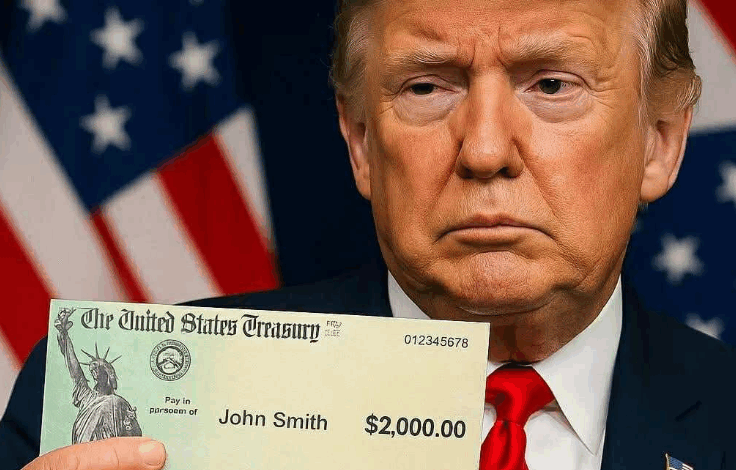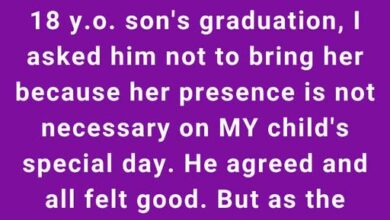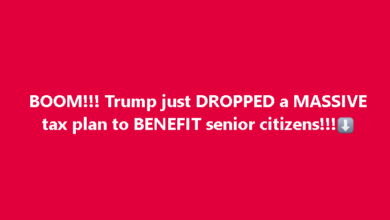
New Requirement for $2,000 Checks!
For days, political insiders and economists had been buzzing about whether the rumors were true. Hints floated through social media, cable news panels dissected vague statements from administration officials, and supporters speculated about a major financial announcement on the horizon. That speculation finally ended on Sunday morning when President Donald Trump confirmed what many had been guessing: he intends to give every American a $2,000 “tariff dividend,” a payment he claims would be funded entirely by the tariffs his administration has imposed on countries around the world.
Trump made the announcement through a post on Truth Social, framing it as a benefit for ordinary Americans rather than wealthy elites. According to him, the revenue from tariffs—money collected from import duties—has grown substantially under his administration, enough to return a portion of it directly to citizens. The message instantly ignited nationwide debate. Supporters celebrated the idea as bold and long overdue. Critics questioned everything from the legality to the math to the timing of the proposal.
This announcement comes at a sensitive moment. Just days before, the Supreme Court heard arguments on whether Trump could legally use emergency powers to apply broad tariffs on nearly every foreign nation. The justices questioned the limits of presidential authority, and the ruling—expected next summer—could reshape the administration’s ability to collect billions in duties or even force the government to issue refunds if the Court finds that the tariffs exceeded legal boundaries.
Despite this uncertainty, Trump has doubled down. He has repeatedly argued that tariffs are a powerful tool that support American workers, strengthen national leverage in trade negotiations, and generate enormous federal revenue. In his announcement, he insisted the tariffs have already produced “trillions,” boosted 401(k) retirement accounts to historic highs, and—contrary to criticism—have not contributed to inflation. He also took a jab at those who oppose tariffs, calling them “fools.”
Treasury Secretary Scott Bessent attempted to clarify the plan during an interview on ABC’s This Week. He suggested that the $2,000 payment might not come in the form of a direct check, hinting instead at alternative methods of distributing value, though he did not provide specifics. His remarks left the public with more questions than answers about how the program would work, how it would be funded, and whether Congress would need to approve it.
The numbers themselves demand scrutiny. Between April and October alone, import duties brought in roughly $151 billion, a significant increase compared to past years. Supporters of the dividend proposal claim that revenue could reach $500 billion annually if current tariff structures remain in place and expand. Even at that level, distributing $2,000 to every American would require hundreds of billions of dollars a year—placing the price tag of the proposal near the limits of projected tariff revenue.
The political implications are equally complex. The announcement comes on the heels of a tough electoral week for Republicans, who lost key races in several blue states where voters expressed frustration about the rising cost of living. For critics, the timing of the dividend proposal feels strategic: a way to boost public morale and regain momentum. For supporters, it’s a tangible demonstration of Trump’s focus on putting money directly into the pockets of working Americans.
Not everyone in the president’s own party is convinced. Ohio Senator Bernie Moreno openly expressed skepticism, saying bluntly, “It’ll never pass. We’ve got $37 trillion in debt.” He and several other lawmakers argue that without a comprehensive restructuring of federal spending, any large-scale cash program—regardless of funding source—will face resistance in Congress.
The Supreme Court’s pending decision only adds more uncertainty. If the justices rule that Trump’s use of emergency powers to impose sweeping tariffs is unconstitutional, the government could be forced to scale them back or even refund billions in previously collected duties. Such an outcome would directly affect the feasibility of a tariff-funded dividend. Some tariffs, such as those on steel, aluminum, and automobiles, appear to face fewer legal challenges and are likely to remain in place. These have been instrumental in Trump’s trade negotiations with foreign governments, giving him leverage in discussions about national security, manufacturing, and international market access.
Looking ahead, the future of the proposed $2,000 “tariff dividend” is far from certain. Even if the administration finds a legally acceptable mechanism to distribute revenue, the broader economic effects must be considered. Economists note that tariffs often increase costs for businesses, which can then be passed on to consumers. Supporters argue that the revenue offsets those impacts. Critics insist the math doesn’t balance and that Americans would end up paying more in higher prices than they receive in dividends.
Still, the proposal has captured public attention, and that is part of its power. Whether or not it becomes policy, it underscores the tension between policy ambition and legal boundaries, between campaign promises and financial reality. It also highlights how political messaging can dominate headlines, even before the underlying details are fully explained.
In many ways, the debate around the dividend is a snapshot of the broader conversation happening in American politics: how to ease financial pressure on households without worsening the national debt, how to use trade policy to strengthen American industries without harming consumers, and how to balance presidential authority with constitutional limits.
For now, the plan remains an announcement—bold, controversial, and unresolved. It may take months for legal review, legislative discussion, and economic analysis to determine whether it is practical, possible, or merely political theater. What is clear is that Americans, facing rising costs and economic uncertainty, are paying close attention. Bold promises can generate excitement, but the path from proposal to policy is rarely simple.
As the nation waits for more clarity from the Supreme Court, the Treasury, and Congress, one thing is certain: the headline may be simple, but the reality behind it is far more complicated than any social media post can capture.




